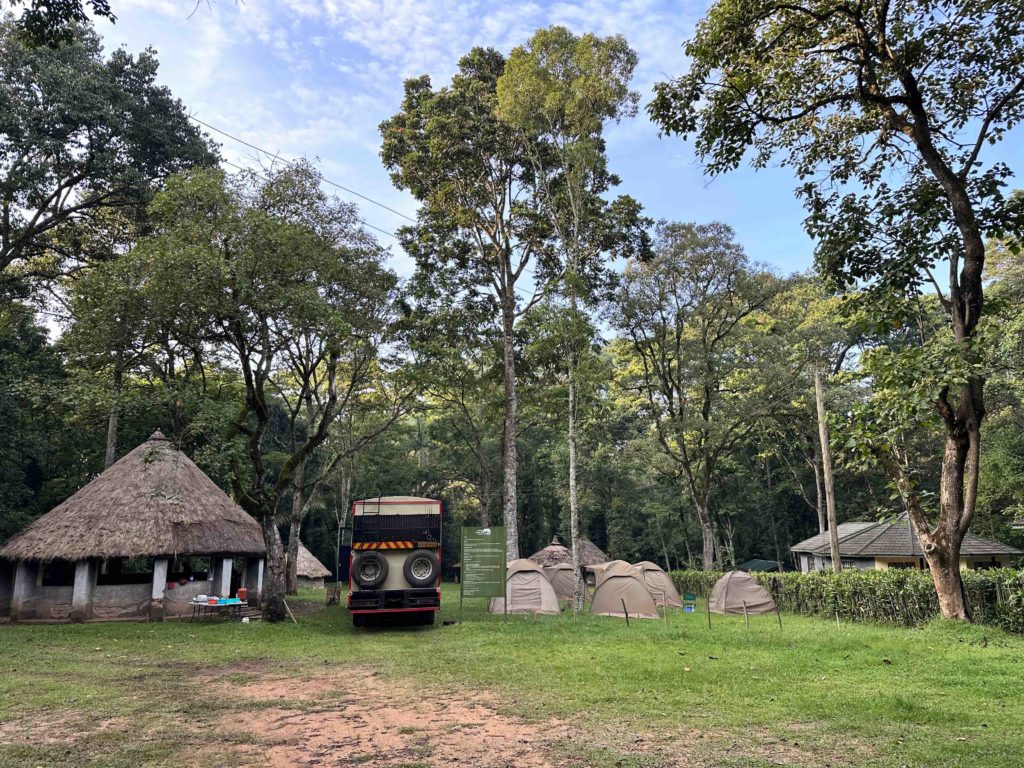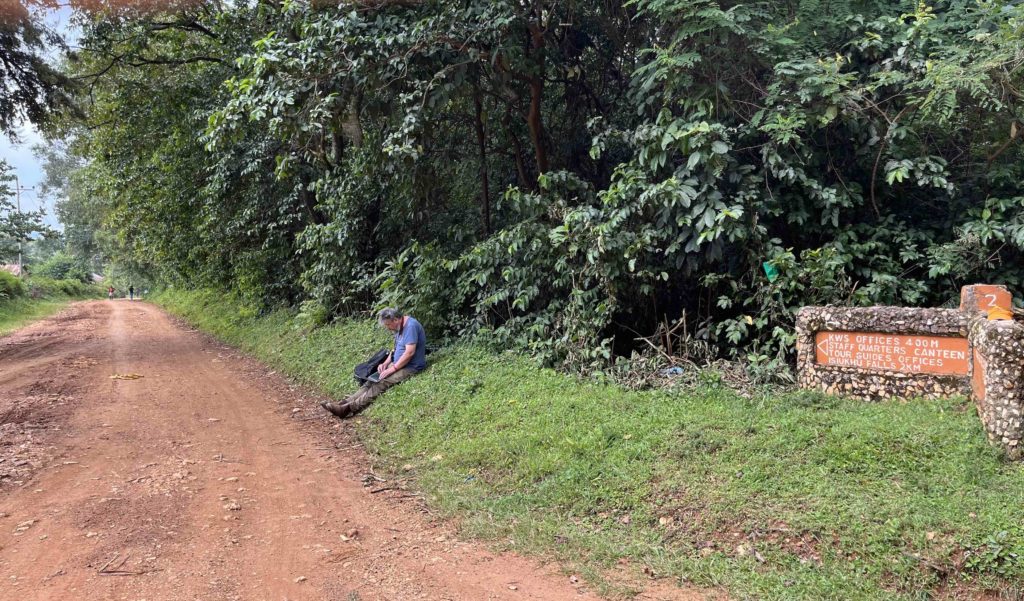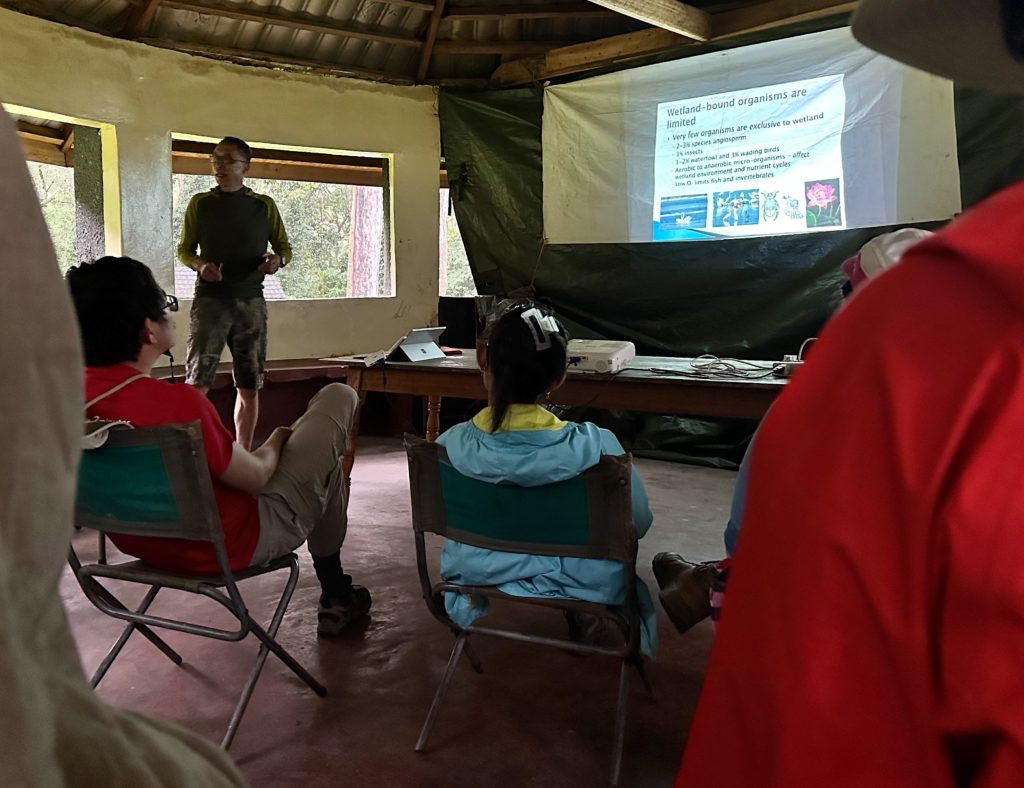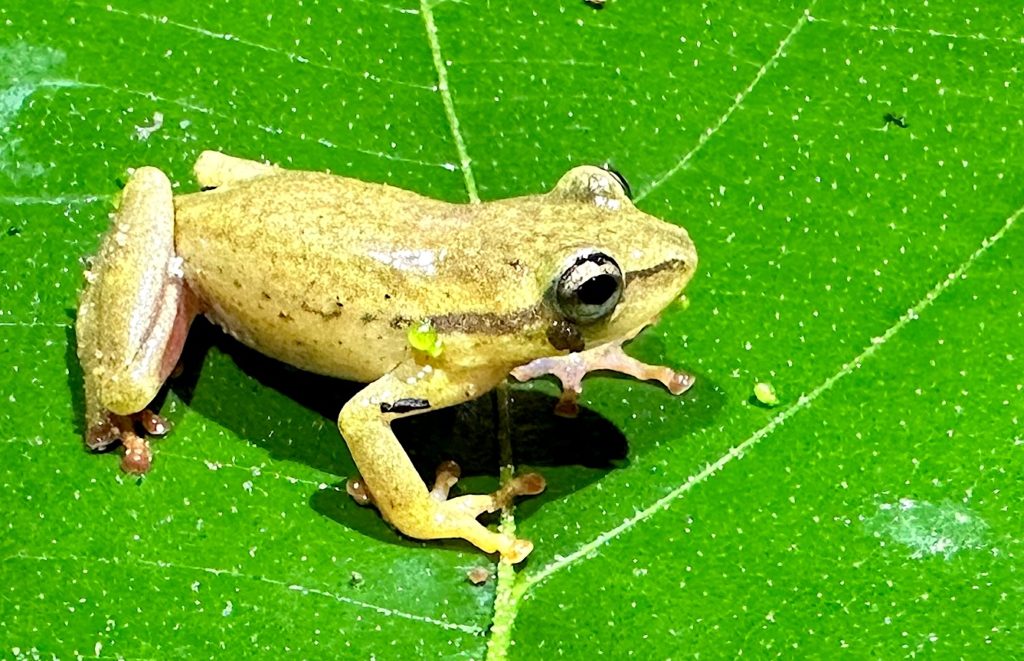BLOG Post 9. June 9, Group A: Andy, Sol, Grace
Birds, butterflies, baboons, oh my! Sadly, today was our last day in Kakamega, so we didn’t let a second go to waste. We awoke to hoots and hollers from the local baboon troupe; some of us waking up early enough to see them swinging through the camp. As per usual John, John, and Chenze had whipped us up a breakfast fit for royalty, which prepared us for our second (and final) Bird-A-Thon™! With nothing but dense jungle between us and the ~350 bird species that call Kakamega home, we had our work cut out for us. Unlike our birding expeditions in the previous two camps, many of these birds are incredibly hard to find within the canopy and understory. A couple hours with cameras, binoculars, and some much-needed help from our local expert Job, and we had several noteworthy findings. After we were all birded out, we reconvened at the main hut and prepped for our next endeavour – butterflies! Our mission – which we chose to accept – was to hit the road, find representatives from the four local families of butterflies, and take some National Geographic worthy photos. Although we returned with some great shots of over twenty species, we were only able to find three families. Just another reason to return! We ended the morning by comparing observations from the Bird-A-Thon™. Some of the crowd favourite findings were the black and white casqued hornbill and the chestnut wattle-eye.
Post-lunch activities began with a frenzy of field notebook writing and some concerted butterfly identification. At 3:00, Dr. Wang delivered a lecture on the mechanisms and organisms present in the world’s wetlands, which was sat in on by a group of blue monkeys! Luckily wetland expert and co-professor Carol was there to relate our lesson to wetlands in Kenya. Allen gave an impromptu spiel about Dr. Lougheed and Dr. Wang’s NSERC alliance grant going towards eDNA research. We then had some free time to explore on our own and fill in our field books for the day.
Dr. Lougheed and Dr. Wang hiked up the road seeking sufficient cell signal so that Dr. Lougheed could upload some blog contents and a smattering of photos that we can supplement later on the truck trip back to Nairobi.
After dark, the group reconvened for a second night walk, hoping to find some new amphibian and reptile species. Job led us back to the pond where we briefly stopped to take-in the chorus of frogs before leading us down to a river deeper in the jungle where the search began. Dr. Lougheed demonstrated excellent herping technique by diving face-first into the reeds, turning off his headlamp, and using his other senses to locate a frog – emerging only slightly bloodied from his foray. Hooray – a Kivu reed frog, Hyperolius kivuensis! Satisfied, we headed back to our campsite to pack up and call it a night.

Our Kakamega Camp

Birdathon

Common names and families (clockwise from top-left): ukerewe ciliate blue (Lycanidae), friar (Nymphalidae), soldier commadore (Nymphalidae), hairstreak (Lycanidae), orange and lemon (Pieridae), central emperor swallowtail (Papilionidae), brown pansy (Nymphalidae), black tipped diadem (Nymphalidae), forest mother of pearl (Nymphalidae).
Photo credits (clockwise from top-left): Alyssa, Meg, Rachel, Arjun, Alyssa, Arjun, Alyssa, Meg, Meg

The field office. Dr. Lougheed on a roadside facing a paddock – the sweet spot with 2 or 3 bars and 4G (sometimes)

Dr. Wang giving a lecture on wetlands

Kivu reed frog, one of the 5 species of frogs that we found
It certainly appears that you packed so much into that day and did not let a second go to waste! It’s amazing to picture babboons swinging through your camp and blue monkeys sitting in on a discussion of wetlands.
This post contained details that I enjoy—a breakfast fit for royalty, the frenzy of writing in field notebooks, the struggle to find a cell signal—and plenty of humour, too. I particularly liked “our mission – which we chose to accept…” and the description of Dr. Lougheed’s herping technique that left him only *slightly* bloodied.
I am so sad that this trip is winding down and I can only imagine how it feels for those who are actually on the trip (and not just tagging along virtually). These blogs have been wonderful. Thank you all so much for giving us glimpses into this adventure.
It sounds like another incredible day, full of beauty in the form of birds, butterflies, baboons and a treasure-filled night hike. It all sounds so fun and interesting!
I am also in awe of the incredible wealth of knowledge and experience of your guides, such as Job and the fact he has seen 75% of the mind-bogglingly diverse bird species in Kenya!!
I’m also really intrigued by the night hikes. There’s always the added excitement and difference in perspective when seeing how familiar (okay, vaguely familiar) terrain changes in the dark.
So wonderful to hear about all your fabulous adventures!